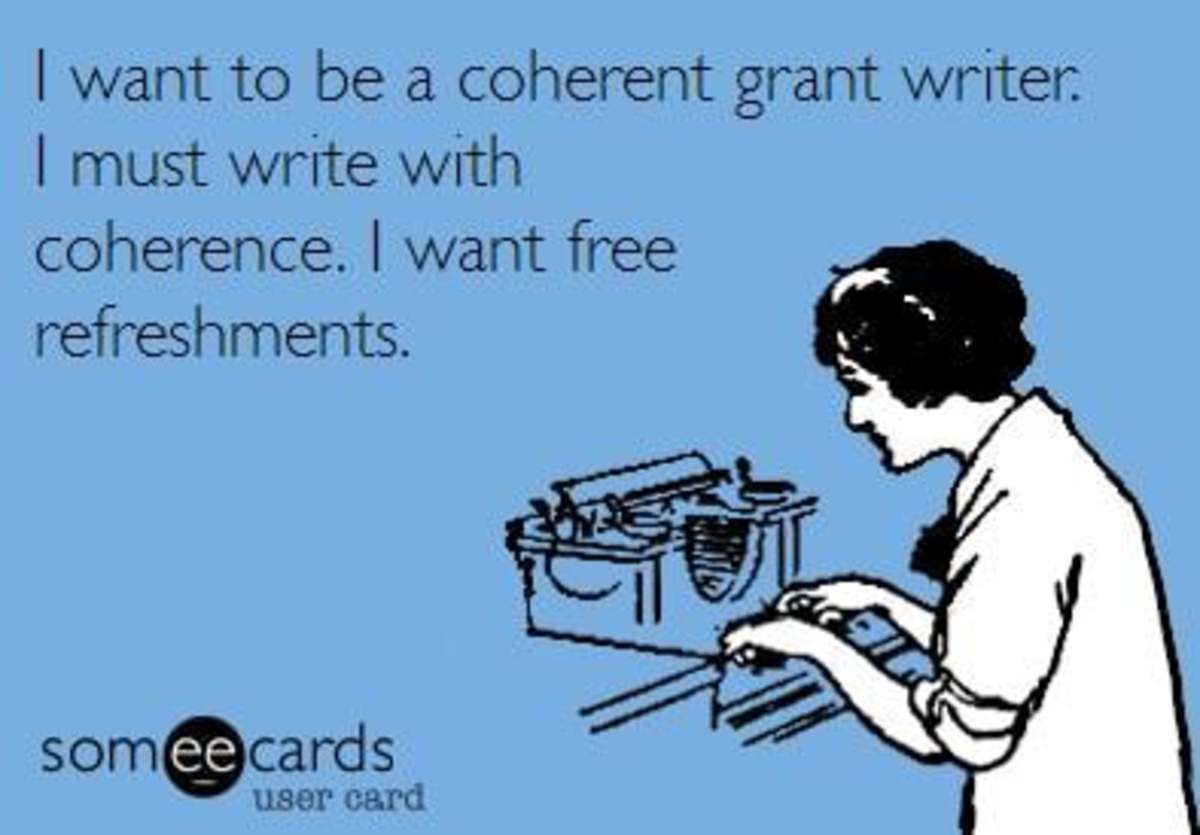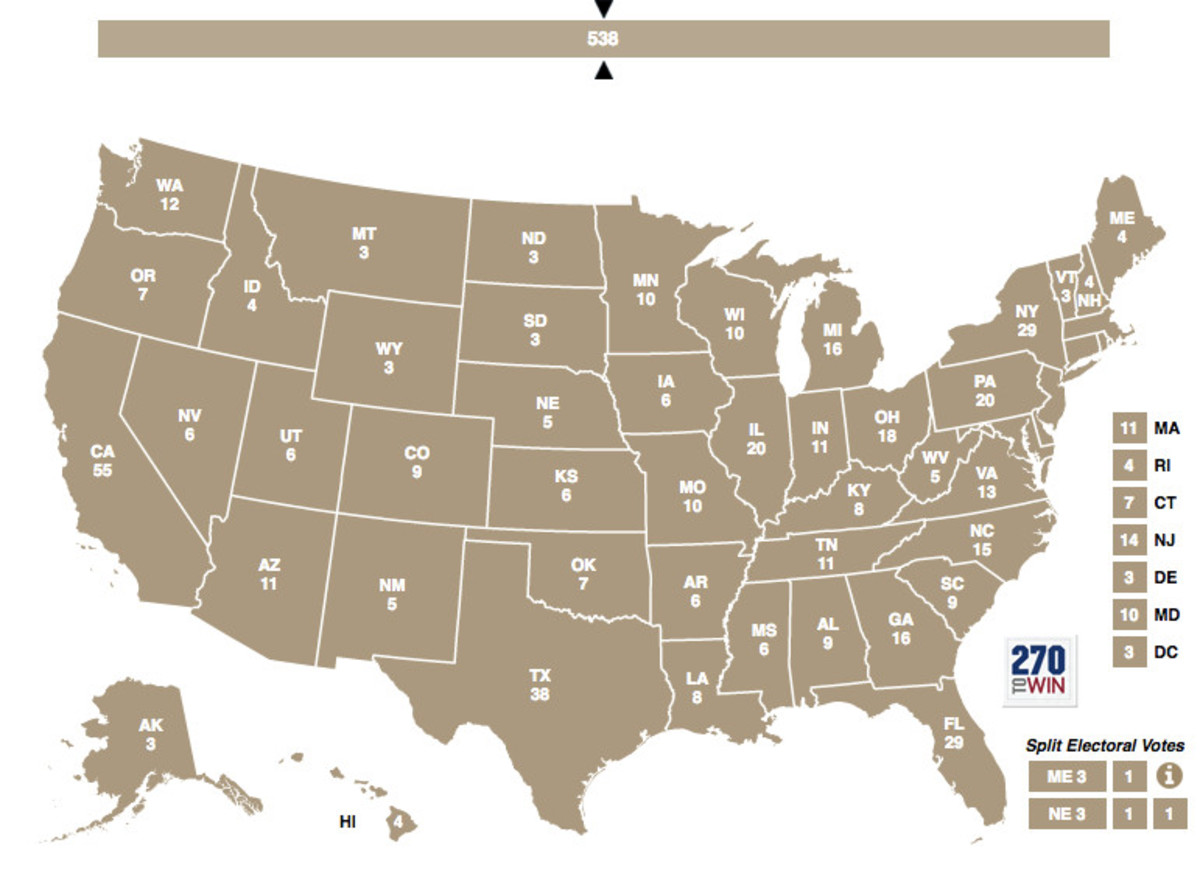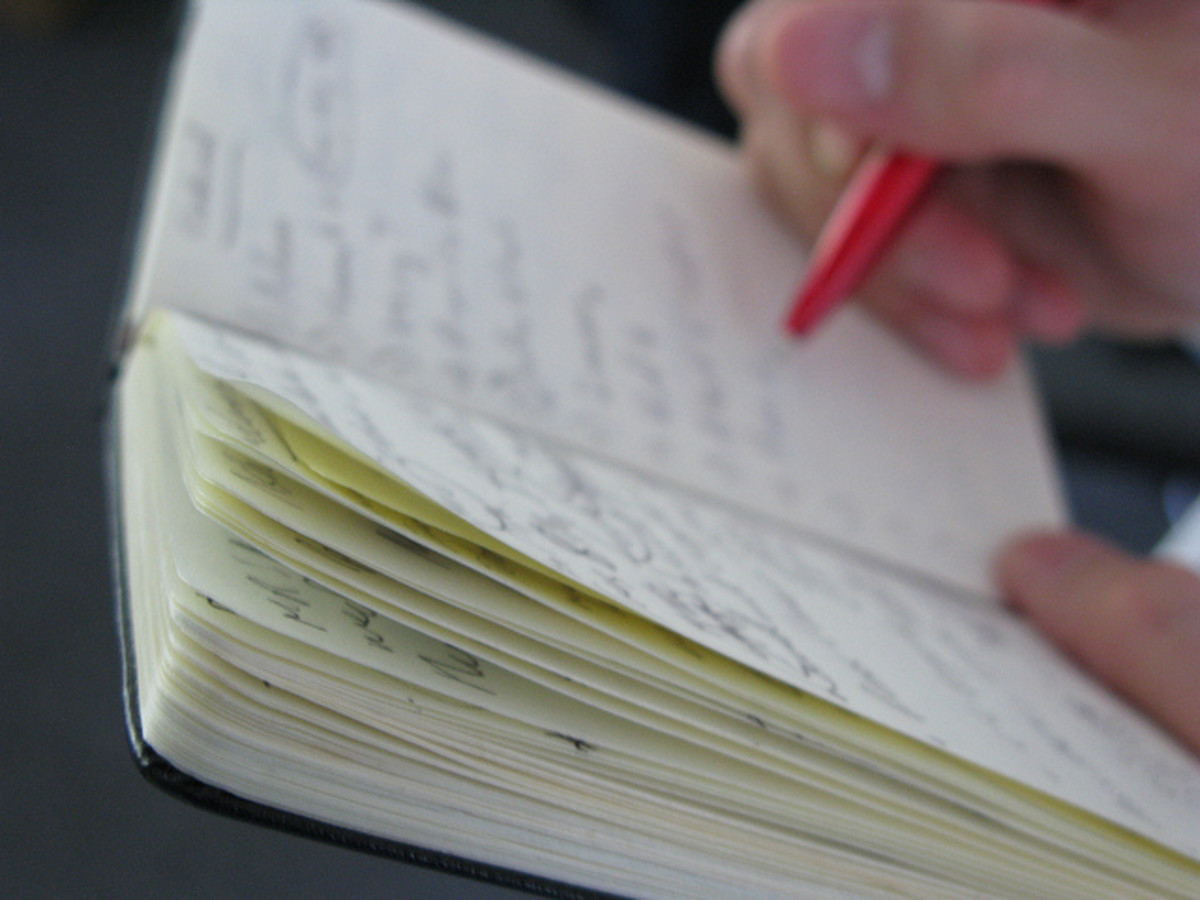Easy A - How to Write a College Level Research / Argument Paper in 5 Easy Steps
The 5 paragraph paper: Intro, 3 paragraph body, and conclusion.
While many high school students believe this is the way to write a paper, they often get quite a shock when they go to college. When the time comes to write their first research paper, many will hear from their professor, "remember the 5 paragraph model? Yes? Forget it."
In this article, you will learn how to write a college level research paper in 5 simple steps.
1. Research.
Obviously, from a topic (most likely given by your instructor), the first step is research. At this point, you should perhaps know what arguments about a particular topic exist, and maybe question these arguments. Is the argument true? Is it sound? Can it be improved? At this point also, you yourself should not have an argument or a position.
From here, begin researching the topic. This includes archival research (newspapers, books, etc.). An easy and effective way to research and find new topics is to take a book on a particular topic you are writing your paper on, and use the "sources" section in this book to find sources. While you should not use these sources as your own (as this is COPYING), you can use the source list as a roadmap to find other sources. For instance, Book A cites Book B. Find Book B, which will cite Book C and so on. This can give you further ideas and information about your topic.
At this point, your mind will begin to ponder things, and, from reading others' arguments and evidence, you should begin to form a stance on the topic yourself.
It should be noted, however, that your argument should remain living. Morph it, change it, allow it to breath. NEVER come up with an argument, and simply find evidence to support it. If you do this, your argument will be full of holes and will be able to be easily taken apart (aside form the fact that your argument will most likely be blatantly wrong.)
2. Find Evidence
From your research, you will begin to find facts, whether they be quotes, statistics, etc., that can be used to support your argument. Write these down and record them - you will need them later.
As previously stated, your argument should be living. If you take a stance on a particular topic, and find evidence which outright disproves your argument, you cannot simply "dust it under the rug." Someone will find it and be able to disprove your argument.
The best thing to do when you find evidence disproving your argument is to either A.) change your argument to accept this fact, or B.) examine this evidence and see if it is itself viable as evidence (if it is not, bring it up in your paper (keep reading to find out when), and you yourself disprove this evidence).
Now that you have evidence and an argument, you are ready to begin formulating your paper.
3. Introduction
First and foremost, you will need to write your thesis. While many professors want a one-sentence thesis, it can be up to three. The thesis needs to be direct, simple, and lays out your entire argument. It should be insanely easy to understand. In a sense, the thesis is the embryo, the yoke, of your intro. Everything else in your intro should be written around your thesis.
The introduction of your paper should be powerful - it needs to draw readers in, and keep them their. Your introduction, however, also needs to fully, in general terms, explain the background of your topic, your argument, the argument of others, and the evidence you will use to prove your stance.
Usually, it's advisable to start outright with a powerful quote or statistic, often unbelievable or unknown to general readers. While your writing style in your paper should remain upper-level and scientific in nature, the first paragraph of your introduction is where you can let your create writing flow. It never hurts as long as it sucks people in.
The next step of your introduction is to layout the background on your topic. If your paper is a painting, this is the background color. It sets up the general framework of what your paper will be about. Generalize, Generalize, Generalize. This part of your intro is for the average joe who picks up your paper and reads it. He needs to understand what the heck it's about.
From here, you should begin to discuss the various arguments surrounding your topic (but not your own, yet). "Author A believes this, using this evidence," and so on. Depending upon your argument, whether it argues against another's argument, or simply builds upon it, you will start feeding your own argument in. "While Author A believes this, this paper will show otherwise," or "While Author A believes this, perhaps he has not gone far enough, which is where this paper will pick up." While it may be easy to do if you are discussing a particularly heated topic, never attack an author or his work. It only makes you look bad.
Near the end of the intro, you should give an overview (but not too much detail) on the evidence you will use. From all of these elements, the reader should be hooked in, and not want to put down the paper. If your paper is a roller coaster, the introduction will be waiting in line, buckling in, and rolling away from the station. The body of your paper will be going up the drop...
(Sometimes the introduction can be the hardest part to begin writing. If you are really stuck, just begin typing your thesis, and write your body. Later, go back and fill in the dramatic parts of your intro.)
4. Body
This should be your playground. It's where you present your evidence, findings, and really beef up your argument.
For the most part, papers should be written chronologically. It's the easiest to write, and the easiest for the reader to understand. Some topics, however, do not allow this - and that's okay. Write the body in a way which feels most natural to you.
Each paragraph needs a perfect transition to the next one. An easy way to do this (but don't overdo it) is the use of rhetorical questions. Ask a question at the end of a paragraph, answer it in the next, and then prove it using evidence. Using this chain methodology, your paper will start to come alive.
Remember that evidence you found that disproves your argument? Well, near the end of your body is the time to use it. "While evidence may show the opposite of my argument, this is simply not true." In other words, preempt those who will be arguing against you. Turn evidence against you around.
The body is usually the easiest, though most time-consuming element to write. But keep plowing through it.
5. Conclusion
Probably the hardest part to write, it can also be the most rewarding.
At this point, the reader, on their metaphorical roller-coaster ride, should have hit the drop, and be sweating profusely. The conclusion is where the reader gets of the ride, and has to wait for the his brain to catch up.
Hard for many to grasp, the conclusion needs to basically repeat your paper, yet, not repeat. You want to repeat only the vital points of your argument - don't include evidence or anything else. In a sense, this part of your conclusion should be an outline of your argument.
From here, you need to add a new piece of information about your argument or topic. If writing chronologically, perhaps discuss the future. DON'T include any new evidence in your conclusion. This new piece of information is simply just a morsel for readers to continue to nibble on long after they have finished your paper.
Finally, like your intro, go out with a bang. Don't necessarily use a quote or statistic, but sum up your paper in a very (very, very, very) powerful sentence that leaves a taste in the mouths of readers.
At this point, and only this point, do you write your title. You should not begin with a title, as the title should describe the work as a whole, and not the other way around.
Tips:
Always (always, always, always) use the first person. This means no: I, We, etc.
Spell out numbers (with the exception of dates). 14,000 should be fourteen thousand
If it looks like it belongs in a text message, throw it out. Words to watch out for: I've, aren't, shouldn't, &, h8 (okay, that's obviously stretching it, but remember, your paper should sound like a newscaster could quote it).
Write your paper EARLY. This gives you time to think about it when you're laying in bed, and change it if needs be. If you write it the night before, hopped up on Monster and pixie sticks, it will most likely be terrible. Then, when you get it back and you got a "D" you will wonder why, then actually read it, and think "did I write this?"
Proper Use on Quotes: Don't just simply copy and paste a quote - integrate it. For example:
- Incorrect: Thomas Jefferson liked Pizza bagels. "I like Pizza bagels, because they have a good taste."
- Incorrect: Thomas Jefferson liked Pizza bagels. "I like Pizza bagels, because they have a good taste." wrote Jefferson.
- Correct: Jefferson, a lover of Pizza bagels, found solace in their "good" flavor.
Ultimately, it sounds more interesting and flows better.
Now, stop playing Xbox 360 or texting your girlfriends, and GET WRITING.
Matthew Gordon is the author of The Thin Blue Line: An In-Depth Look at the Policing Practices of the Los Angeles Police Department &
To Live, To Think, To Hope - Inspirational Quotes by Helen Keller.
© Matthew Gordon, 2011









